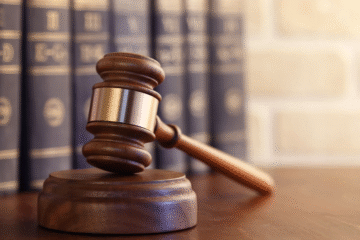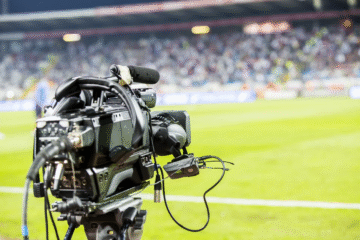
This article is written by Anna Elizabeth Mithun of University of Turin, Italy, an intern under Legal Vidhiya
Abstract
The COVID-19 pandemic profoundly disrupted the global sports industry, leading to event cancellations, financial losses, and legal uncertainties. This essay examines the legal challenges that emerged in the wake of the pandemic, including contractual disputes over force majeure clauses, and other complications. It also explores how sports organizations and governing bodies adapted. The analysis highlights both the immediate legal impacts and the long-term implications for governance in sports. Ultimately, the pandemic has accelerated a shift toward greater legal resilience and adaptability within the sports industry.
Keywords
COVID-19, sports industry, force majeure, contract law, pandemic, employment law, sports governance, legal risk management.
Introduction
The COVID-19 pandemic stands as one of the most disruptive global events of the 21st century, affecting every aspect of daily life and industry. Among the sectors hardest hit was the sports industry, which faced an immediate halt to activities worldwide. From the postponement of the Tokyo 2020 Olympics and the suspension of professional leagues like the NBA and Premier League, to the closure of local sporting events and training facilities, the impact was unprecedented in scale. However, beyond the economic and social ramifications, the pandemic triggered a series of complex legal challenges that continue to reshape the global sports landscape.
Contracts were breached or suspended, leading to disputes between athletes, teams, sponsors, and broadcasters. Employment relationships in sports organizations faced uncertainty, with furloughs, layoffs, and salary reductions becoming commonplace. Issues around event cancellations, insurance claims, and new health compliance requirements further complicated the legal environment. This essay aims to explore the impact of COVID-19 on the sports industry, focusing on the immediate consequences and long-term implications.
Overview of the Sports Industry Pre-COVID
Prior to the widespread impact of COVID-19 in March 2020, the sports industry largely operated around live events that typically included in-person fans. The cancellation of basketball games and other major sporting events like NCAA’s March Madness and the MLB season in early 2020 was considered “unprecedented,” indicating that the normal course of business involved scheduled competitions with spectators.
The industry generated revenue through diverse streams. Primary models included broadcasting rights, specifically making money from TV, live events which generated “gate receipts” (ticket sales), and sponsorships. The ability to earn income from these multiple sources was noted as a strength of professional sports. While merchandising isn’t explicitly detailed as a primary revenue stream in the same context as TV, live events, and sponsorships, the broader concept of a strong brand sustaining merchandise sales implies its presence.[1]
In terms of legal structures, collective bargaining agreements (CBAs) were a fundamental component in professional sports, later becoming a forum for discussing new pandemic-related circumstances such as salary implications and testing protocols. Player contracts were clearly integral, as evidenced by ongoing conversations about compensating student athletes, which the pandemic further accelerated. Sponsorship deals were a core part of the financial model, contributing significantly to revenue.
COVID-19’s Immediate Impact on Sports
The COVID-19 pandemic caused immediate and widespread disruption across global sports, with organized mass sport activities being among the first casualties. Top-level international events were suspended or cancelled starting in March 2020, leading to the postponement of major competitions, most notably the Tokyo Summer Olympic and Paralympic Games. The widespread deployment of unprecedented lockdowns and social distancing measures effectively closed down sports across the globe. Even upon resumption, games were often played in the absence of spectators, necessitating significant protocols to reduce virus spread while still requiring around 300 people at an English Premier League game played behind closed doors.
The economic consequences were severe, plunging much of the sector into a financial crisis that threatened the survival of clubs, leagues, and even sports governing bodies. Sports betting operators experienced a 90% drop in amounts wagered in the subsequent months. Governing bodies saw key revenues from event organization, broadcasting, and sponsorship reduced, weakening their financial standing. Colleges and universities in the USA, part of the “American Model” of student-athletics, faced significant downstream effects of lost revenue, with some citing the pandemic as a reason to cut non-revenue teams, impacting student-athletes and raising Title IX concerns. Financial pressures also led to pay deductions, salary deferrals, and an increased dependency of smaller sports organizations on public funding.[2]
These immediate disruptions gave rise to numerous legal challenges. The crisis exposed frailties in sports governance and increased the bargaining power of public authorities over sports organizations, shifting the balance away from the autonomy of sports. The global suspension of anti-doping testing raised fears of increased doping and damaged the perceived integrity of sporting competitions. Questions arose regarding the legitimacy of new made-for-betting events, with regulators questioning their integrity. The return to play also introduced complex legal issues concerning athlete health and safety, employer liability, workers’ compensation, and insurance coverage. Furthermore, the necessity for social distancing rapidly remodelled Alternative Dispute Resolution (ADR) in sports to fully online, paperless procedures, including electronic filings and remote hearings.
Legal Challenges Faced by the Sports Industry
The global COVID-19 pandemic significantly disrupted the sports industry, leading to widespread legal challenges concerning contracts, event management, and financial stability.
a) Contractual Disputes
The COVID-19 pandemic caused unprecedented disruption in the world of sports, leading to the cancellation, suspension, or postponement of numerous national and international competitions, including Wimbledon 2020, the Australian Grand Prix, Ligue 1, Top 14, Roland Garros, Tokyo 2020 Olympic Games, and Euro 2020.[3] This disruption had a profound impact on all stakeholders, including athletes, sports agents, clubs, federations, and economic players such as sponsors and advertisers. Consequently, many contracts in professional sports were suspended, bringing a host of legal issues.[4]
A primary legal consideration for professionals was to analyze the contracts and determine the applicable law, as sports contracts often have a transnational nature. If French law applied, parties frequently attempted to invoke Article 1218 of the French Civil Code on force majeure. This article allows a party to suspend or even terminate a contract if an unforeseeable, external, and irresistible event prevents its execution. The sports industry was no exception to this. The Colmar Court of Appeal, for instance, ruled that the COVID-19 pandemic constituted a force majeure event on March 12, 2020. While past epidemics were not always recognized as force majeure by French courts, government measures, including those implemented by sports federations and national leagues, could also meet the criteria as they directly impacted economic activity.
It is important to note that Article 1218 is not a mandatory provision, meaning parties could contractually define force majeure exemptions. A key consideration was the date of the contract’s conclusion; any sports contract signed after the pandemic was declared generally prevented parties from invoking force majeure, as they were deemed to have accepted the risk. However, if unforeseen new measures were later introduced due to the pandemic’s evolution, arguing force majeure could still be challenging but not impossible. Legal professionals and courts were likely to use March 12, 2020, the date the French state of emergency was declared, as a reference point.
The contractual consequences under Article 1218 depended on the event’s status:
- Suspension or postponement was considered a temporary hindrance, leading to a suspension of contractual obligations. However, if the suspension lasted too long, it could render performance meaningless, effectively nullifying the contract.
- Cancellation was deemed a permanent hindrance, resulting in automatic contract termination.
The specific wording of sports contracts was decisive, especially whether a contract was linked to a precisely identified sporting event or concluded for a fixed term. For example, a sponsor might argue their brand was no longer promoted due to absent sporting events and might decide to suspend related payments, risking future litigation. In cases of suspension or termination, compensation issues often arose. While force majeure typically exempts a party from liability, modern sports contracts might include alternative mechanisms such as the reimbursement of expenses and penalties (e.g., for cancelled events) or the suspension of financial obligations like broadcasting rights payments. Good-faith renegotiation clauses for bonuses or performance-based payments were also anticipated. Additionally, complex operations involving multiple contracts could see dependent agreements become void if one disappeared, under Article 1186 of the French Civil Code. Facing this unprecedented situation, parties were expected to renegotiate contract terms in good faith.
b) Event Cancellation and Insurance
The widespread cancellation, suspension, and postponement of sporting events like Wimbledon 2020 and the Australian Grand Prix placed insurers directly in the front line due to the significant economic stakes in modern sports. Insurers’ policies often contained mechanisms to limit their exposure, such as requiring the insured’s participation in risk mitigation, prior declaration, or the implementation of safety measures.
A critical issue that arose was that some insurers had included explicit exclusions for epidemics or pandemics in their insurance policies. This meant that despite events being cancelled due to the pandemic, coverage might be denied. To prevent insurers from evading the implementation of their insurance guarantees, a precise and detailed analysis of the general and special conditions of each policy became essential..[5]
c) Compliance and Health Protocols
The implementation of government measures and those introduced by sports federations and national leagues directly impacted the continuation of economic activity within sports. These measures were significant enough that they could, in some cases, meet the criteria for force majeure.
Think of the sports world during COVID-19 like a complex, tightly choreographed dance performance that suddenly had its music stop. While some dancers could pause and restart (suspension/postponement), others had their performance cut short entirely (cancellation). The contracts governing this performance, like the dancers’ agreements and the venue’s booking, then became subject to intense legal scrutiny, akin to an orchestra trying to figure out if a sudden power outage counts as unforeseeable in their contract, especially if the power grid had known issues. And just as some performers might find their insurance doesn’t cover “acts of electrical grid failure,” many sports entities discovered their policies excluded pandemics, leading to a scramble to renegotiate or face a judge.
Governance and Policy Responses
During the COVID-19 pandemic, sports governing bodies and governments adapted their legal frameworks and policies differently based on their organizational structures.
Under the hierarchical European model of sport, exemplified by the International Olympic Committee (IOC), decisions were generally centralized and aimed for global consistency. The IOC, in collaboration with the Japanese government, postponed the 2020 Tokyo Olympic Games to 2021. They implemented specific precautions for participants, including mandatory negative COVID-19 tests prior to arrival, daily testing during the first two weeks in Tokyo, and a 14-day quarantine period regardless of vaccination status. While vaccines were made available, they were not initially a universal requirement for Olympic participation, although other international events like the 2022 World Athletics Championships later mandated full vaccination.[6]
In contrast, the decentralized North American model resulted in a more fragmented approach. Professional sports leagues, as private business entities, negotiated collective bargaining agreements with player unions to define return-to-play conditions, season length, economic terms, and COVID-19 protocols. This included strategies like the NBA’s “bubble,” the NHL’s “hub cities,” and modified schedules for MLB and NFL. These agreements also specified individual player opt-out rights and compensation. The NCAA’s autonomous divisions and conferences made their own decisions regarding collegiate sports, leading to variations in health and safety requirements. Similarly, high school and youth sports policies varied significantly by state and local jurisdiction, often leading to legal disputes over restrictions.
Governments played a crucial role through national emergency declarations and localized lockdowns that impacted sports. In the U.S., public health authority largely rested with state and local governments, resulting in non-uniform decisions that were sometimes influenced by political considerations as much as, or more than, medical data. Courts generally upheld reasonable governmental health and safety rules, recognizing that athletic participation is a conditional privilege rather than an absolute right. However, courts also applied stricter scrutiny if regulations infringed upon fundamental individual rights, such as religious freedom.[7]
Ultimately, the pandemic highlighted the benefits of a collaborative, global approach to infectious disease prevention in sports, similar to the World Anti-Doping Code (WADC) model, to achieve future consistency and uniformity.
Long-Term Legal Implications
The COVID-19 pandemic has indeed ushered in a period of significant and lasting legal implications for the global sports industry. The crisis has made it clear that the rules for operating sports as we knew it have changed, necessitating a profound re-evaluation of legal frameworks and agreements.
A key area of legal scrutiny highlighted by the pandemic like we said involves technical force majeure rights. The challenges of widespread suspensions, postponements, and cancellations of competitive sports events since March 2020 have raised significant questions about how such contractual clauses should be applied and interpreted. This experience strongly suggests a future where contract drafting will likely evolve to include more robust force majeure and specific pandemic clauses, designed to address unforeseen global health crises more explicitly.[8]
Furthermore, the imperative to ensure player, personnel, and spectator health, safety, and security has become paramount. This renewed focus on safety inherently points towards an increased emphasis on health-related responsibilities and protections within future agreements. The necessity for the industry to pivot, innovate, and remain vigilant to survive underscores that legal considerations must now fundamentally prioritize health and safety in operational planning and contractual obligations.[9]
Conclusion
The COVID-19 pandemic exposed the legal fragility of the global sports industry, forcing stakeholders to confront unprecedented challenges. From the suspension of major events and contractual disputes to employment controversies and insurance claims, the pandemic reshaped the legal landscape of sports in profound ways. Organizations, athletes, and governing bodies were compelled to reassess risk management, contract clauses, and health protocols, highlighting gaps that had previously gone unnoticed.
In response, the sports sector has begun to implement more robust legal strategies, including clearer force majeure provisions, enhanced health and safety regulations, and restructured employment agreements. The crisis has also prompted deeper collaboration between legal professionals, policymakers, and sports authorities to create frameworks that are better prepared for future disruptions.
Ultimately, COVID-19 has served as both a wake-up call and an opportunity for legal innovation within the sports industry. Moving forward, resilience and adaptability will be essential not only in how sports are played and consumed but also in how they are governed and legally protected.
References
- 7 Ways COVID-19 Has Changed Professional Sports, (July 20, 2021), https://online.uwp.edu/degrees/business/professional-programs/ms-sport-management/covid19-impact/.
- City National Bank, How Covid-19 Changed the Sports Industry, City National Bank (Jan. 19, 2024), https://www.cnb.com/business-banking/media/looking-forward/covid-19-and-sports.html.
- Matthew J. Mitten, Laurel C. Montag, and Abigail C. Barnett, COVID-19 Sports Competition Lockdowns, Return-to-Play Decisions, and Participation Requirements: A Retrospective Review and Future Medicolegal Framework, 35 Marq. Sports L. Rev. 29 (2024)
- Sports Law – What impact will covid-19 have on sports contracts? – Romain Bizzini, Lawyer in Business Law and Sports Law, Romain Bizzini, Lawyer in Business Law and Sports https://www.bizzini-avocat.com/en/publications/impact-covid-contrats-sportifs.
- The impact of Covid-19 on sports: a mid-way assessment, PMC https://pmc.ncbi.nlm.nih.gov/articles/PMC7377209/.
- The Impact of the Covid Crisis on the Sport Industry, Marbella International University Centre (July 18, 2025), https://miuc.org/impact-covid-crisis-sport-industry/.
- Weston, COVID-19’s Lasting Impact on the Sports Industry: Financial, Legal, and Innovation, (Feb. 12, 2021), https://digitalcommons.law.scu.edu/lawreview/vol61/iss1/4/.
[1] City National Bank, How Covid-19 Changed the Sports Industry, City National Bank (Jan. 19, 2024), https://www.cnb.com/business-banking/media/looking-forward/covid-19-and-sports.html.
[2] The impact of Covid-19 on sports: a mid-way assessment, PMC https://pmc.ncbi.nlm.nih.gov/articles/PMC7377209/.
[3] The Impact of the Covid Crisis on the Sport Industry, Marbella International University Centre (July 18, 2025), https://miuc.org/impact-covid-crisis-sport-industry/.
[4] Sports Law – What impact will covid-19 have on sports contracts? – Romain Bizzini, Lawyer in Business Law and Sports Law, Romain Bizzini, Lawyer in Business Law and Sports https://www.bizzini-avocat.com/en/publications/impact-covid-contrats-sportifs.
[5] Ibid.
[6] Matthew J. Mitten, Laurel C. Montag, and Abigail C. Barnett, COVID-19 Sports Competition Lockdowns, Return-to-Play Decisions, and Participation Requirements: A Retrospective Review and Future Medicolegal Framework, 35 Marq. Sports L. Rev. 29 (2024)
[7] Ibid.
[8] Weston, COVID-19’s Lasting Impact on the Sports Industry: Financial, Legal, and Innovation, (Feb. 12, 2021), https://digitalcommons.law.scu.edu/lawreview/vol61/iss1/4/.
[9] 7 Ways COVID-19 Has Changed Professional Sports, (July 20, 2021), https://online.uwp.edu/degrees/business/professional-programs/ms-sport-management/covid19-impact/.
Disclaimer: The materials provided herein are intended solely for informational purposes. Accessing or using the site or the materials does not establish an attorney-client relationship. The information presented on this site is not to be construed as legal or professional advice, and it should not be relied upon for such purposes or used as a substitute for advice from a licensed attorney in your state. Additionally, the viewpoint presented by the author is personal.




0 Comments